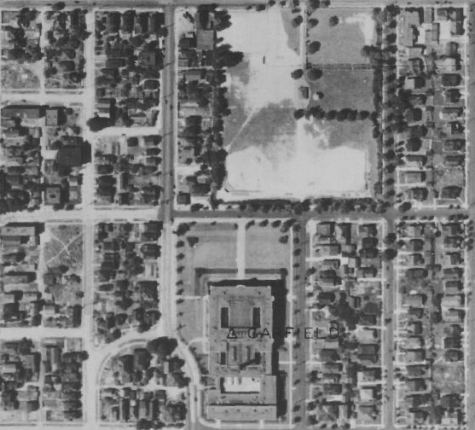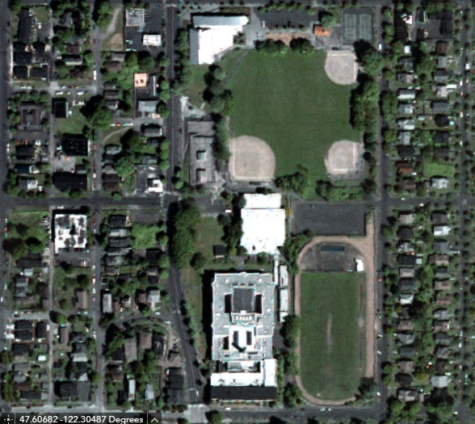A Brief History of 400 23rd Ave
Broken treaties, blocks gone missing, 88 million dollars in fees.
If you are a Garfield student sitting in advisory right now, look around you. Look out the window at the field and imagine the native rainforests that once grew there. Look downtown towards the water and imagine the longhouses on rocky beaches housing the Salish tribes. Our beloved school and community has a past dating back hundreds of years.
Duwamish and Salish tribes occupied the lands we now call The Central District. Duwamish writings stake their claim to the land all the way back to the Ice Age. The higher ground where Garfield is now was wilderness at the time. Not far away were the longhouses that the Duwamish lived in, closer to the coast for easy fishing access.
Fast forward to the Treaty of Point Elliott in 1855. This was an agreement between the European settlers and many tribes in the area such as the Lummy, Salish and, most notably, the Duwamish. The treaty guaranteed land, fishing rights, and hunting rights to the tribes in their native land. In return, the settlers were given 54,000 acres of land in the area. Settlers disregarded this treaty, triggering Native rebellions. Chief Si’ahl of the Duwamish tribe protected small American settlements in the area; in return, the land they inhabited was named in his honor: Seattle.
During the mid-1800s, the Industrial Revolution took its toll on Seattle. The Cenral District area was a center for the lumber industry due to its placement uphill from the business district. Trees cut down were transported along the “skid row” down to the Henry Yesler sawmill. Today the “skid row” is named Yesler Way. Take a three block walk for about 70 years from this historic street and you’re at the back doors near the LA department at Garfield High school.

Named after President James A. Garfield, the building still retains the original front walkway from its construction in 1920. However, not much else is the same. The gym and Teen Health Center that once stood near the entrance, built in 1923, were two of the many victims of demolition on the campus. The aerial shots, of the post-2009 remodel show stark differences to the existing facility.

The first and most notable change is the block of houses that once occupied the football field. Little is known about the purchase of this block of homes, but the addition made room for the lower grass to be developed into baseball fields in the remodel.
In the early 2000s, it was clear that Garfield High School was still dependent on dumbbell waiters to transport supplies from floor to floor. Classes were held in locker rooms because of the lack of classroom space. In an interview with the City of Seattle, former Principal Theodore Howard said that he once thought the whole school needed to be torn down and rebuilt. However, Seattle Public Schools decided to begin a renovation in 2009 instead. The student resource center and gym were torn down to build the Quincy Jones Auditorium along with the Teen Health Center. Mr. Jones himself said in an interview with School Construction News that the auditorium “gave him chills.” The school remodel spared no expense, totaling at an eighty-eight million dollar construction fee. The remodel kept the roots of the school, preserving the historic brick and marble doorway, while also allowing accommodations for a growing school that currently teaches 1,700 students today.


Lucy is a junior at GHS. she has been with the messenger since the 2021 school year. she has done many articles for the NFO section of the paper and...





